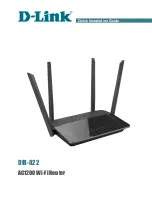
Packet Binary Convulational Code(tm) (PBCC)
- A modulation technique developed by Texas
Instruments Inc. (TI) that offers data rates of up to 22Mbit/s and is fully backward compatible with
existing 802.11b wireless networks.
PAP
- This is a simple authentication protocol where the username and password data are both handled
in a cleartext or unencrypted format. We do not recommend using PAP because your passwords are
easily readable from the Point-to-Point Protocol (PPP) packets exchanged during the authentication
process.
PCI
- Peripheral Component Interconnect - Local bus for PCs from Intel that provides a high-spe
path between the CPU and up t
ed data
o 10 peripherals (video, disk, network, etc.). The PCI bus runs at 33MHz,
supports 32-bit and 64-bit data paths, and bus mastering.
PPPoE
- Point-to-Point Protocol over Ethernet. Point-to-Point Protocol is a method of secure data
transmission originally created for dial-up connections. PPPoE is for Ethernet connections.
PPTP
- PPTP stands for Point-to-Point Tunneling Protocol. It provides a means for tunneling IP traffic i
Layer 2. For
n
instance, it allows you to establish a connection to a corporate network and share files or other
data as if your machine were actually on that local network.
Roaming - A function that allows your to move through a particular domain without losing
network connectivity.
SNMP
- Format used for network management data. Data is passed between SNMP agents (processes that
monitor activity in hubs, switches, etc.) and the workstation used to oversee the network. SNMP uses
tainable
Static IP
Management Information Bases (MIBs), which are databases that define what information is ob
from a networked device and what can be controlled (turned off, on, etc.).
- If your Service Provider has assigned a fixed IP address; enter the assigned IP address,
subnet mask and the gateway address provided by your service provider.
SPI
- Stateful Packet Inspection ensures that the data coming into your network was requested by an en
node computer on your LAN. The Barricade examines the incoming data an
d
d compares it to a database of
trusted information. As traffic leaves the network it is defined by certain characteristics. Incoming
cteristics the incoming traffic is allowed. If no match is found the incoming traffic is discarded.
information is then compared to these sets of characteristics. If the incoming data matches the predefined
set of chara
Subnet Mask
- A subnet mask, which may be a part of the TCP/IP information provided by you
a set of four numbers configured like an IP address. It is used to create IP address numbers used only
r ISP, is
within a particular network (as opposed to valid IP address numbers recognized by the Internet.
TCP/IP
- Transmission Control Protocol/Internet Protocol. This is the standard protocol for data
transmission over the Internet.
sport
r real-
rrors, and UDP is used instead.
TCP - Transmission Control Protocol - TCP and UDP (User Datagram Protocol) are the two tran
protocols in TCP/IP. TCP ensures that a message is sent accurately and in its entirety. However, fo
time voice and video, there is really no time or reason to correct e
UDP
- User Datagram Protocol - A protocol within the TCP/IP protocol suite that is used in place o
when a reliable delivery is not required. For example, UDP is used for real-time au
f TCP
dio and video traffic
where lost packets are simply ignored, because there is no time to retransmit. If UDP is used and a reliable
elivery is required, packet sequence checking and error notification must be written into the applications.
d
71
Summary of Contents for Barricade SMCBR14UP
Page 1: ......







































